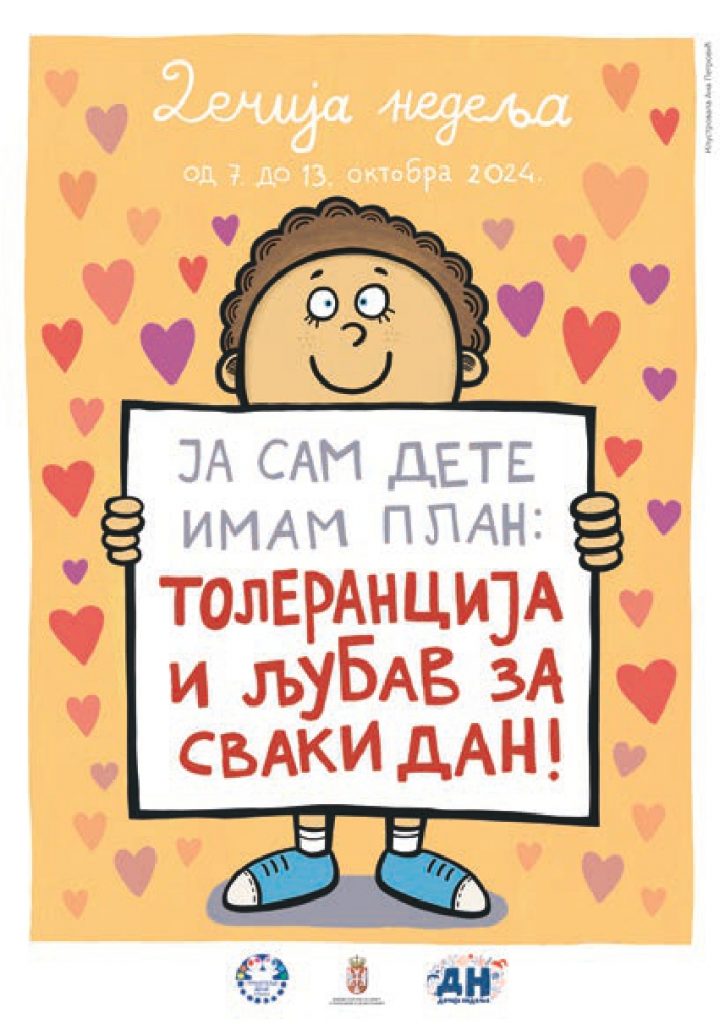Children’s Week is a national event celebrated in Serbia during the first week of October. It is dedicated to children of all ages, aiming to promote and protect their rights, well-being, and development.
Schools, kindergartens, cultural centers, and communities across the country organize creative workshops, sports events, performances, exhibitions, and educational activities.
The goal is to raise public awareness about the importance of investing in children, listening to their voices, and ensuring a happy, safe, and healthy childhood for all.
Each year, Children’s Week has a different theme that highlights a specific aspect of children’s rights or needs.
Dečija nedelja je nacionalna manifestacija koja se obeležava u Srbiji tokom prve nedelje oktobra. Posvećena je deci svih uzrasta, sa ciljem da se promovišu i zaštite njihova prava, dobrobit i razvoj.
Škole, vrtići, kulturni centri i lokalne zajednice organizuju kreativne radionice, sportske događaje, predstave, izložbe i edukativne aktivnosti.
Cilj je da se podigne svest javnosti o važnosti ulaganja u decu, slušanja njihovog glasa i obezbeđivanja srećnog, bezbednog i zdravog detinjstva za svako dete.
Svake godine Dečija nedelja ima različitu temu koja ističe određeni aspekt prava ili potreba dece.
